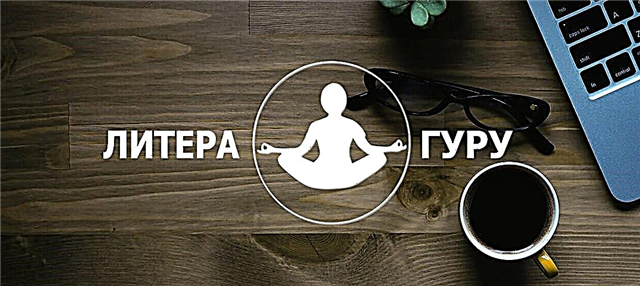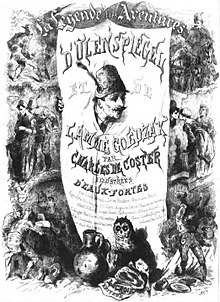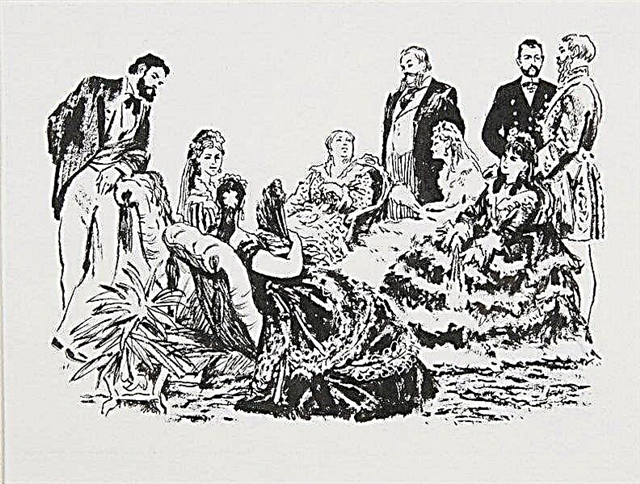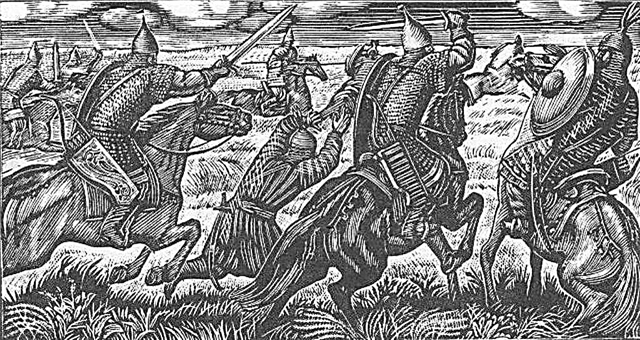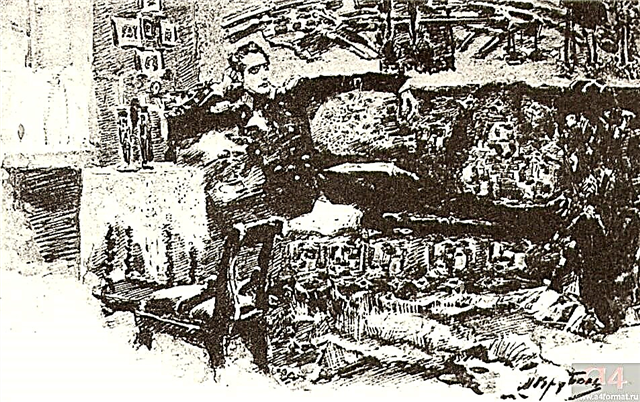How to put things in order without losing your temper
The Getting Things Done (or GTD) method is based on pondering the results and defining the “next steps”. The main idea of GTD helps to clearly define the goal, and then every step towards achieving this goal. The method is suitable for organizing presentations at work, and for planning Christmas purchases.
Each task should be small so that you can solve it quickly, and the lack of time or motivation could not stop you. This approach helps to achieve all your goals in life, helps to avoid stress.
When organizing projects using the GTD method, you will always be ready to start working on the task immediately, regardless of what is happening around and where you are. GTD makes the next step so easy for you that you don't want to put it off.
In this book you will find some simple tools that you can use to work effectively and maintain a sober mind; as well as recommendations on what attitude needs to be developed to implement the basic principles of GTD.
Your brain is a tool of thinking, not a storage device
To be successful in your work means to be a good organizer. This is especially important for mental workers, for whom juggling dozens of tasks and projects is simultaneously an everyday reality. Difficulties arise when the fine line between our personal and professional lives is blurred. This is because our brain is trying to figure out unresolved issues and reminds us of them at the most inopportune moment - even if we would prefer to deal with them later.
To keep all the complex information about life under control, many of us treat our brains like a desk drawer or notebook. We abuse our brain, forcing it to store all kinds of information. Clogging our heads with information about unfinished assignments, upcoming meetings, and other commitments, we are recklessly wasting our brain's ability to think, which makes it difficult to concentrate on real work.
In order to work as efficiently as possible, we must free our minds from everything that is not related to the task that we perform at a particular moment in time. Use 100% of your mind’s ability to focus on the task.
If you want to think clearly, you need a reliable “basket for collecting material” beyond your mind
Our brain has one annoying property - it never lets us forget what we need to take care of. We are constantly “bombarded” with new information, which also occupies a place in our mind. Every new idea, every memory and every problem that we forgot to solve distracts us from the main business.
Always use the so-called “basket for collecting material”: a place outside your mind where you can put any extraneous information or idea. You will know exactly where to find the information later, when you have time for it. This allows you to completely concentrate on writing a letter, talking with a colleague or mowing the lawn.
Your “basket for collecting material” can be a notepad, lists on your computer / phone or even boxes in which you can put objects and documents. Your basket (or baskets) for collecting material should be located nearby - so it will be easy for you to extract information that you otherwise would have accumulated in your mind.
Take out the trash - empty all external "baskets" weekly
For the system to function smoothly, you must support it. Develop a habit of reviewing and emptying the basket once a week. The “basket for collecting material” system works because it gives the mind a rest with the confidence that it will not lose or forget any important information.
If the system is not updated, it ceases to be reliable, and the brain becomes alert and ceases to trust it. As soon as this happens, the subconscious mind will again begin to be distracted by unresolved problems and unfinished tasks. You should carefully consider all your tasks and put things in order, guided by the following rules:
- Cross out the unimportant tasks from the list.
- If you can solve the problem very quickly (in two minutes or less) - do it immediately.
- Keep important information in a safe place. If it is a meeting, project or a specific task, transfer it to the appropriate list.
- Regular “basket cleaning” is the only way to ensure reliable performance and avoid stress.
Emptying the “basket”, sort the material by lists
No matter how the material in your “basket” is different, you do not need to classify and sort it into separate “boxes” or lists.
Most to-do lists do not work because they turn into a “salad” of tasks, thoughts, and information. The lists should include only specific, feasible tasks, but we write everything indiscriminately into them and therefore it is very easy to lose sight of individual feasible tasks.
How to organize items in your basket?
- Delete everything that’s insignificant, solve small tasks and add meetings or deadlines to your calendar.
- If this is a complex work (that is, it requires the implementation of several specific tasks), include it in the project with a clear purpose.
- All other tasks should be included in the Next Actions list.
The “Projects” list gives an overview of all your current projects.
Projects are a key component of any productivity improvement system. A project is a desired result that requires multi-step action. To determine what tasks the project should consist of, imagine the result you want to achieve and describe the desired result in one sentence. Thinking about the result helps to formulate specific tasks that will bring you closer to achieving the project goal.
The list contains all the projects that should be completed in the near future. This will help you track and control all ongoing projects, increase productivity, and relax.
By updating the list weekly, make sure that each project is scheduled step by step. All actions that make up the project fall into the list of "Next Actions". It is specific tasks that can achieve any goal.
Replace your daily to-do list with your calendar and Next Actions list.
Daily lists of current affairs are ineffective - they distort your sense of time, mislead you and make you believe that you really have time to do all of the above in a day. Such unrealistic planning leads to disappointment, loss of time and dooms to failure what you are doing in advance.
A much more effective method is working with the calendar and the Next Actions lists. The calendar serves only one purpose: to record appointments. Everything connected with a certain day or hour — a meeting or a doctor’s visit — should be recorded on a calendar.
Put all other tasks or specific steps in the Next Actions list. It allows you to quickly decide which tasks are most relevant, and whether you have time to solve them.
No matter where you are, you should always have a list of “Next Actions” with you. This will give you the opportunity to choose which task makes sense to solve.
If you have well planned and pre-selected tasks, it will not be difficult for you to decide which one makes sense to tackle.Imagine that you are at the airport and your flight is delayed by an hour. In this situation, ask yourself:
- What task should I choose now?
- What task can I finish in the allotted time?
- For what task do I have enough energy at a given time?
- Which task has the highest priority?
If you have too many tasks planned, it makes sense to distribute them across multiple lists and repositories. For example, one list can be stored on a smartphone, and the other on a computer. Having sorted the tasks in this way, you will know which one you can perform while at your desk or at a meeting, or while waiting at the airport.
Waiting lists will be helpful when working with other people.
All current projects should be listed in the Projects list. When using the “Next Actions” list, you can make sure that you are consistently working on tasks, each of which brings your projects closer to completion.
In most cases, you should rely on other people who are responsible for the individual parts of each project. But this does not mean that you should give up control over the progress of any of your projects.
Whenever you depend on the work of other people - you are waiting for a report from someone to continue working on the presentation - it’s worth keeping a list of “Pending”. So you can note everything that other people should provide you, along with deadlines.
By updating this list every week, you will see who and how is doing their job. You will have a new specific task: to remind this person of the obligation.
If this task takes you no more than two minutes, do it immediately. If not, add it to the "Next Actions" list or to one of the more specific lists and in a friendly way remind the person that you are still waiting for his report.
Save information for a specific day in a calendar or file cabinet
You can plan a lot of things in advance, but sometimes you have to wait for certain information before turning the materials from your “basket” into specific tasks or meetings.
Example. If you are planning an interesting trade show, then you might want to wait a bit and see its participants before deciding whether it makes sense to attend it. If such information is not available to you in advance, then it is best to postpone the decision.
In cases where you have no choice and you have to plan everything at the last minute, the following strategies will come in handy:
- Set yourself a reminder for a specific day on the calendar.
- Keep a file that helps you access the right information at the right time.
A file cabinet is a very accurate and logical system. It consists of 43 files: 31 files for days of the month and 12 for months of the year. Every day you will be able to check documents, reminders or materials “sent” to yourself.
For the system to work, you must use and update it daily, and this is the most difficult.
For ideas that may become relevant in the future, add them to the Once / Maybe List.
This list includes everything that is not in the lists of "Next Actions" or "Projects", but that should not interfere in the head. The Once / Possibly list contains all the material that you have not yet transformed into specific ideas or tasks. Do not underestimate its benefits. It allows you to track project ideas that may be extremely important in the future. The ideas on this list can be divided into groups. For instance:
- “Trips I would like to make”;
- “Wines I would like to try”;
- "The music that I would like to listen to."
Like the “Next Steps”, “Once / Maybe” lists will help you find the information you need at the right time. Lists are more reliable than your own memory.
The Once / Possibly list should be reviewed and updated regularly if you want to use it effectively.
Organized workplace and weekly revision of your system increases productivity
All materials lists should be accessible from your workplace. Create a “control cabin” - a functional mobile system to gain access to information, wherever you are. It is extremely important to create a list and file system that you can take with you wherever you go: even if you are stuck at the airport or in a snowstorm, you can still be productive.
The GTD technique allows you to feel calm and control all current projects: monitor their progress and make sure that they are moving forward.
Your productivity system must always remain relevant and complete. Your mind will relax and be able to fully concentrate on the task only if you trust your system.
By reviewing all your lists weekly, you will make sure that your system remains functional - each current project is associated with at least one “Next Action” in a relevant, easily accessible list. You will have a general idea of everything that happens. Revision helps to see the "forest" without losing sight of the "trees."
The amount of time you spend on a weekly review depends on how much time you need to feel safe and build confidence in the system.
Plan your weekly review, such as Friday night. This will allow you to close your work and leave for the weekend with a clear head and a sense of control.
Natural planning clarifies the goals and next steps of your projects
Project development is a rather unnatural and illogical process. You must think through and plan all the steps in advance, not yet imagining a clear goal. Use a natural planning method that reflects your daily activities.
An example of everyday action: you are hungry and form a vague goal (“I have to eat something”), and then specify it (“I want pizza”). At this point, several ideas appear in your head on how to achieve this goal (“I can either bake pizza, or order it, or go to a restaurant”). Any steps that you need to take along the way become self-evident.
Apply this way of thinking to your real projects: start with the most specific definition of purpose. It never hurts to spend time setting goals, because all subsequent actions will depend on this. When the goal is clear, your mind will automatically begin brainstorming. So you can come up with the ideas necessary to achieve the goal. A good tactic is to start brainstorming from the outside; for example, write down and save your ideas on paper.
Once you have gathered all your ideas, you need to organize and group them, and then identify the specific actions needed to complete the project.
Natural planning greatly clarifies the work on the project and makes it interesting, fast and intuitive.
The most important thing
How to work efficiently and with a clear head?
- Your brain is a thinking tool, not a storage device. If you want to think clearly, you need a reliable "basket for collecting material" outside of your mind.
- Take out the trash - empty all external "baskets" weekly.
- When sorting the "baskets", sort the material according to thematic lists.
Simple Tools Composing the GTD Method
- The “Projects” list provides an overview of all your ongoing projects.
- Use the calendar and Next Actions lists instead of a daily to-do list.
- Waiting lists are very useful when you work with other people.
- Save information for a specific day in a calendar or file cabinet.
- All potentially interesting ideas should be added to the Once / Possibly list.
- An organized workplace and a weekly review of your system is indispensable for productive work.
How to implement the basic principles of GTD?
Natural planning clarifies the goals and next steps of your projects and makes it easier to work on them.


